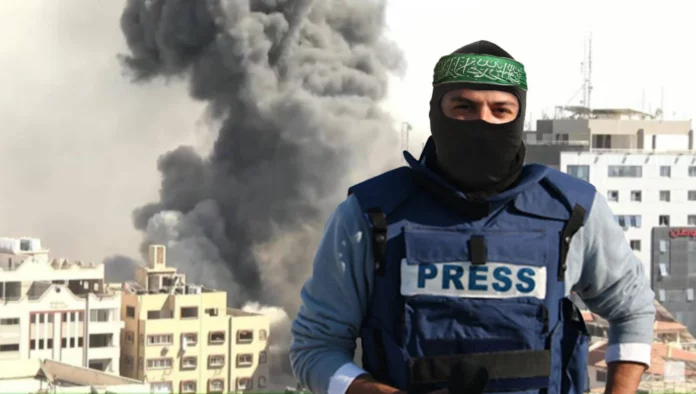“What were they doing there so early on what would ordinarily have been a quiet Saturday morning?”
—Part of a post by the advocacy group HonestReporting about the photojournalists who entered Israel from Gaza during the Hamas attack on October 7
“The accusation that anyone at The New York Times had advance knowledge of the Hamas attacks or accompanied Hamas terrorists during the attacks is untrue and outrageous.”
—From The New York Times’ angry denial that it had any prior knowledge of the attacks or that the photojournalist who took photos for it did
It’s not hard to be cynical about the state of the journalism that is being practiced by the mainstream US media in regard to the war in Gaza. Just the fact that they have been incessantly focused on Israel’s actions in Gaza as atrocities happen around the world—such as in Sudan, Syria and Pakistan, where millions of Afghans are being expelled—suggests that they may have a biased point of view they want to get across. But last week, the questions about the reporting of the conflict with Gaza moved from whether there was bias to whether there was complicity in the October 7 attacks.
One fact that many of us noticed after the October 7 attacks was that there were reporters from Gaza on the ground inside Israel as Hamas terrorists carried out their barbarous attacks. That was part of the shock of the attacks; it was so brazen that it seemed regular Gazans had entered Israel, including reporters.
But the media watchdog organization HonestReporting asked a further question. How did the Gazan photojournalists get across the border so quickly, fast enough that some of them caught images and videos of the attacks taking place? Had they simply realized that an attack was taking place and followed along? Or had they had some advance knowledge of the attacks?
The answer?
The HonestReporting essay noted that The Associated Press used photos of October 7 taken by four Gazan photographers—Hassan Eslaiah, Yousef Masoud, Ali Mahmud and Hatem Ali. Masoud also works for The New York Times. The photos used by Reuters were attributed to two other photographers—Mohammed Fayq Abu Mostafa and Yasser Qudih. CNN used video taken by Eslaiah as well.
Did any of these photographers know that the attacks were going to happen? And how did they behave when they entered a different country, following the Hamas terrorists?
The response of the news outlets that used the photos taken by these photographers to the questions raised by HonestReporting ranged from mildly concerned to angry.
In some cases, they were responding to other media figures or outlets that had suggested the media outlets might have known about the attacks beforehand or had embedded journalists with Hamas, an accusation that HonestReporting did not make.
“The Associated Press had no knowledge of the October 7 attacks before they happened,” said Nicole Meir, media relations manager for the AP. “The role of the AP is to gather information on breaking news events around the world, wherever they happen, even when those events are horrific and cause mass casualties. AP uses images taken by freelancers around the world, including in Gaza.”
Reuters said that it had used photos taken by freelancers with whom it did not have a prior relationship and that none of its staff reporters were on the scene.
To read more, subscribe to Ami





















